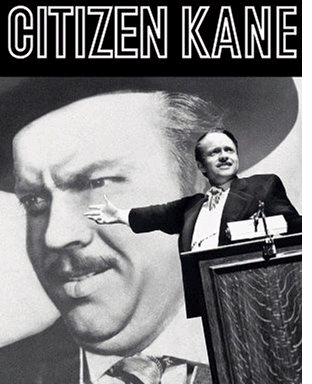Citizen Kane Syndrome
 According to the American Film Institute, Citizen Kane is the greatest movie ever made, but when was the last time you saw it on TV? Only high-brow movie channels like Turner Classic Movies or maybe Bravo! will show it, and likely not very often. You’ll never see it as a Fox Saturday matinee or as part of Peachtree’s weekend movie marathon.
According to the American Film Institute, Citizen Kane is the greatest movie ever made, but when was the last time you saw it on TV? Only high-brow movie channels like Turner Classic Movies or maybe Bravo! will show it, and likely not very often. You’ll never see it as a Fox Saturday matinee or as part of Peachtree’s weekend movie marathon.
Why is that? It’s indisputably great, having influenced just about every film made after it and changing the way people saw cinema. But plunk your average movie-goer down in front of Orson Welles’ opus, they’ll likely fall asleep or try switching the channel.
This is what I like to call Citizen Kane Syndrome.
CKS afflicts many movies, but Citizen Kane has all the symptoms: an older, influential work that has become a fixture in culture. It lost its lustre because of its cultural significance.
Contemporary viewers don’t enjoy it because they’re already familiar with many of the artistic touches that made the film brilliant.
Most people don’t realize it but Citizen Kane was the first film to show the ceiling in a room. It’s true. Cameras had never been canted to such a degree that the roof was visible – until 1941 when Citizen Kane came out. It was the first movie to use deep focus throughout. It was pioneered special effects make-up. And on and on.
At the time, these were exciting new narrative techniques. Today? Mehn.
There are countless other aspects of the film that, at the time, were revolutionary, but today are taken for granted.
And, really, how thrilling can a plot twist be when Rosebud’s identity is revealed in a spoof on Tiny Toons?
It happens in every corner of pop culture too.
Stan Lee and Jack Kirby’s incredible run on Fantastic Four launched the Marvel Age. But some of its magic has been lost as the medium and craft have built upon that foundation.
The Beatles were once bigger than Jesus, but now fans of rock music expect faster beats, more complex chords and higher production values.
In Cold Blood remains a chilling look at two murderers, but its impact as creative non-fiction is not what it once was, since the New Journalists (and the New New Journalists, for that matter) have followed Truman Capote’s lead.
CKS forces media consumers into the tricky position of having to consider the historical context of the art not just politically or economically, but creatively as well. This can be a taxing requirement, and it only takes away from the viewing experience.
At the same time, there are some films, books and bands which remain timeless. Shakespeare is the easy example, but the Wizard of Oz (the movie, not the novel) also comes to mind.